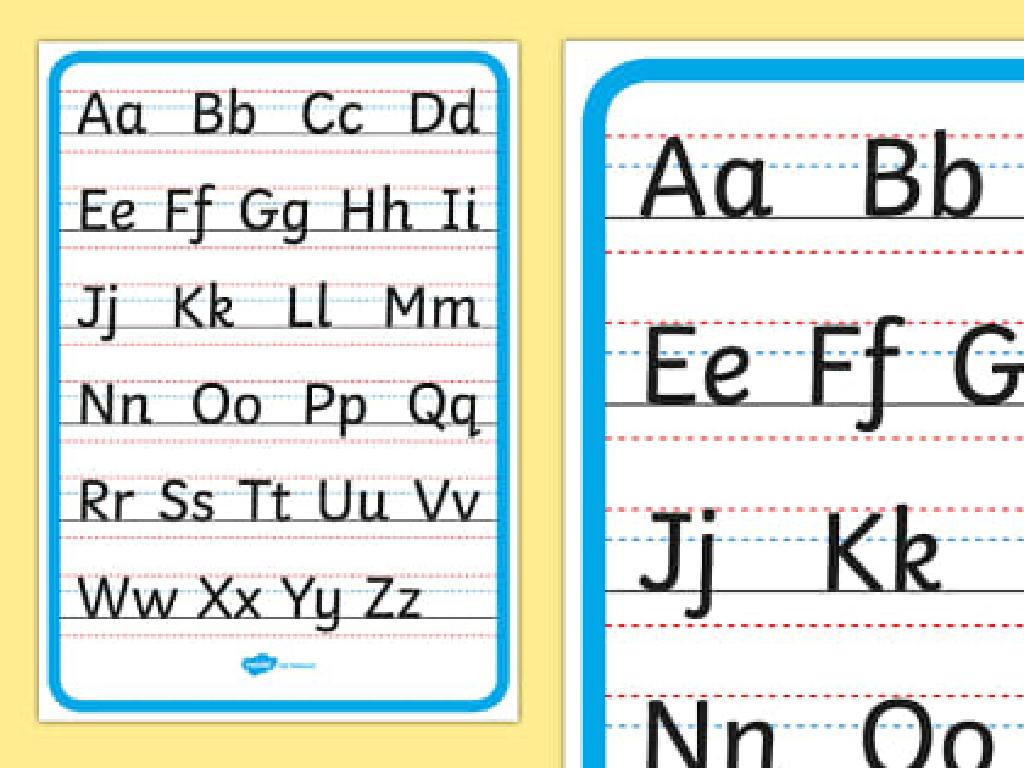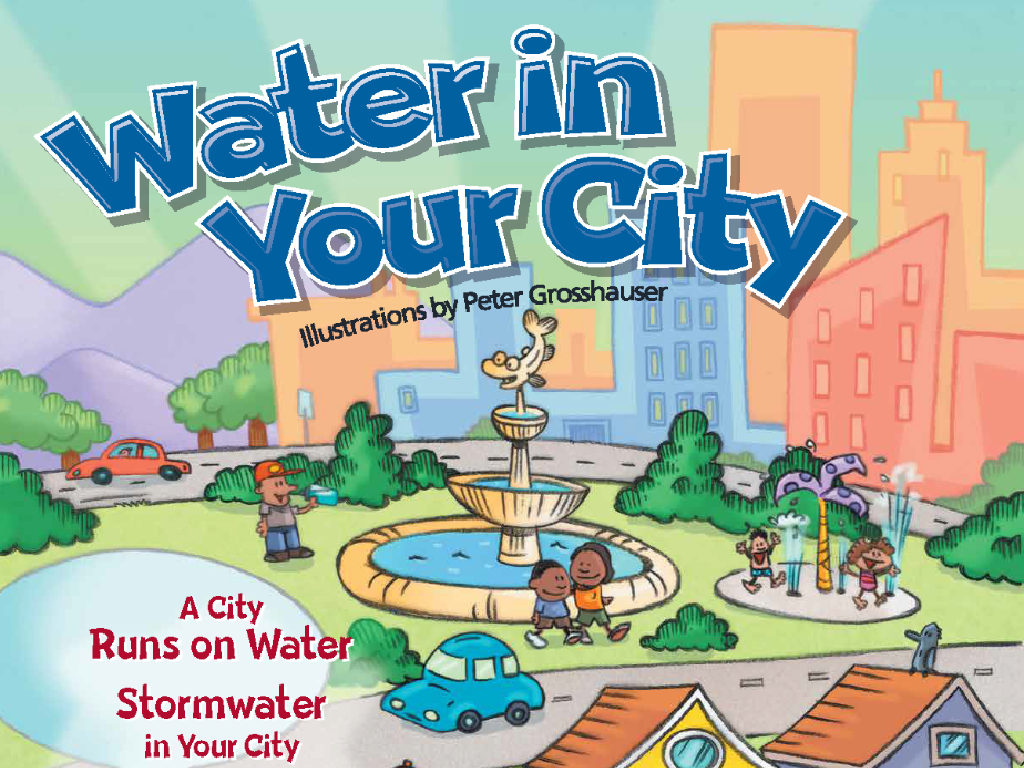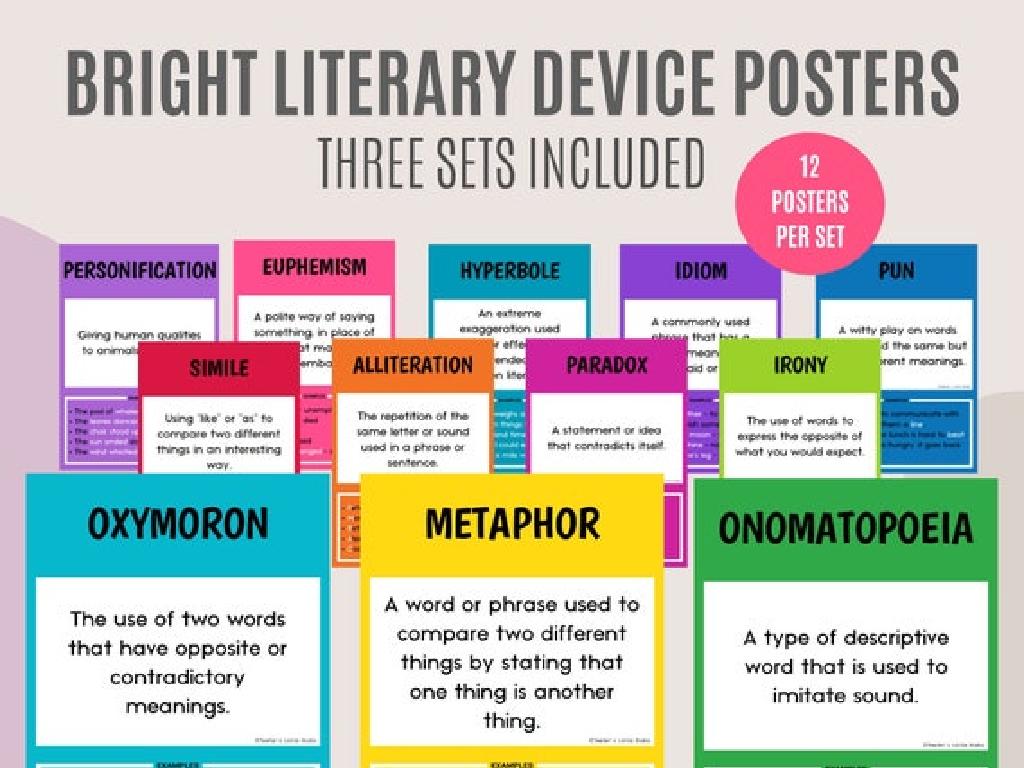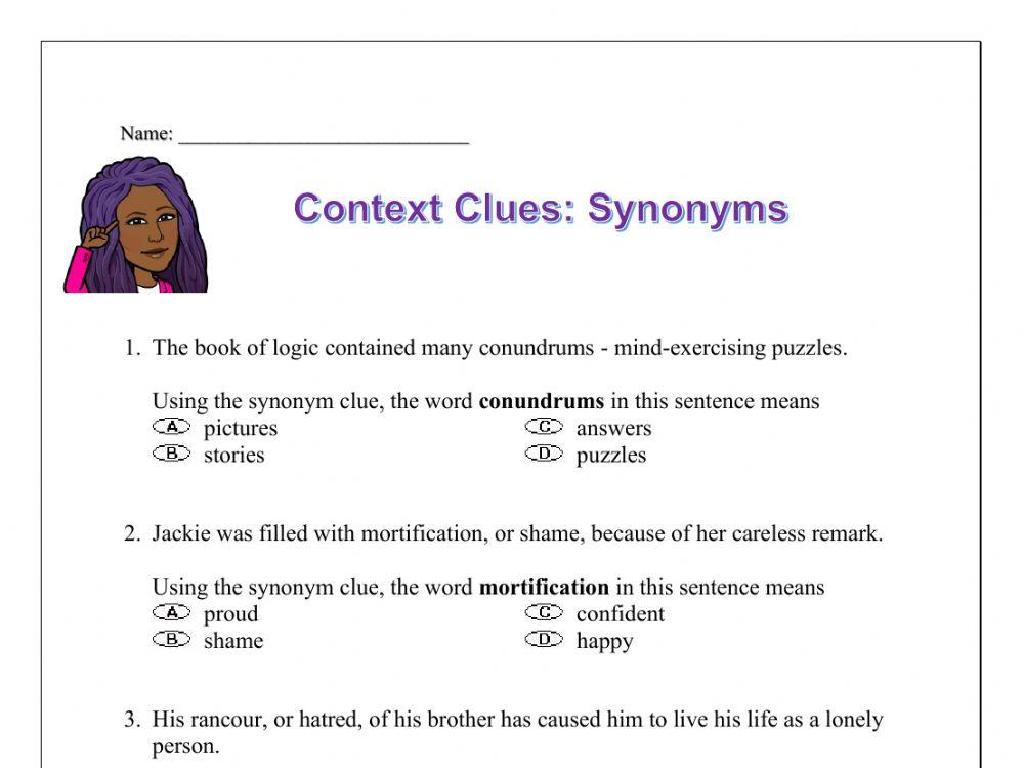Which Number Is Greatest/Least?
Subject: Math
Grade: Third grade
Topic: Ordering And Comparing
Please LOG IN to download the presentation. Access is available to registered users only.
View More Content
Understanding Greatest and Least Numbers
– Learn to compare numbers
– Grasp greater and lesser values
– Numbers have values that can be compared using , = signs
– Know why ordering is key
– Ordering helps in daily decisions like spending money
– Practice with examples
– Use number lines or count objects to see which is more or less
|
This slide introduces the concept of comparing numbers, which is fundamental in understanding mathematics and its applications in everyday life. Start by explaining that numbers represent quantities and can be compared to each other to determine which is greater or lesser. Emphasize the importance of knowing how to order numbers, as it is a skill used in many real-life situations, such as determining who has more items, or which amount is larger when dealing with money. Provide examples and visual aids like number lines to help students visualize the concept. Encourage students to practice by comparing different sets of numbers and identifying the greatest and the least among them.
Understanding Number Comparisons
– What does ‘compare’ mean?
– Comparing is finding if a number is bigger, smaller, or the same as another.
– Symbols: >, ‘ means greater than, ‘<' means less than, '=' means equal to.
– Practice with examples
– Let's compare 5 and 7, or 8 and 8 using symbols.
– Comparing numbers game
– We'll play a game to identify the greatest and least numbers.
|
This slide introduces the concept of comparison in mathematics. Start by explaining that comparing numbers helps us understand their value relative to each other. Introduce the symbols used for comparison: greater than (>) for larger numbers, less than (<) for smaller numbers, and equal to (=) for numbers that are the same. Provide clear examples, such as comparing single-digit numbers, to ensure understanding. Conclude with an interactive game where students can apply their knowledge by identifying the greatest or least numbers from a set, reinforcing the concept in a fun and engaging way.
Understanding Greater, Less Than, and Equal To
– Greater than symbol (>)
– Shows one number is larger than another, e.g., 5 > 3
– Less than symbol (<)
– Indicates a number is smaller than another, e.g., 2 < 4
– Equal to symbol (=)
– Means two numbers are the same, e.g., 6 = 6
– Comparing numbers with symbols
– Use symbols to determine which number is greatest or least
|
This slide introduces the symbols used to compare numbers: greater than (>), less than ( 3 means that 5 is greater than 3. Encourage students to practice by comparing different pairs of numbers and using the correct symbol to show their relationship. Reinforce that the wide open side of the symbols always points to the larger number, which can be a helpful visual cue for remembering how to use them.
Let’s Practice Comparing Numbers!
– Comparing with symbols
– 5 > 3 means 5 is greater
– Greater than: more than another number
– 2 < 4 means 2 is smaller
– Less than: fewer than another number
– Equal numbers use =
|
This slide is designed to help third-grade students understand the concept of comparing numbers. Start by explaining the symbols for greater than (>) and less than (<), and how they are used to compare two numbers. Use simple, relatable examples to show that the wide open side of the symbol always points to the larger number, while the pointed end faces the smaller number. For equal numbers, introduce the equal sign (=). Encourage students to think of the symbols as a little mouth that always wants to eat the bigger number. During the class, provide additional examples and have students practice by writing their own comparisons. This will help solidify their understanding of the concept.
Finding the Greatest Number
– Understanding the number line
– Numbers to the right are greater
– Identifying the highest value
– The largest number in a group
– Practice with example sets
– Let’s find the biggest: 5, 9, 3, 7
– Explaining ‘greatest’ in math
– ‘Greatest’ means most in quantity
|
When teaching third graders to find the greatest number, start by explaining the concept of a number line and how numbers increase in value as we move to the right. Emphasize that the greatest number is the one with the highest value, which will be the farthest to the right on the number line. Use examples to illustrate this, such as comparing small sets of numbers and identifying the greatest one. Provide a set of numbers like 5, 9, 3, and 7, and guide the students through the process of finding the greatest number, which is 9 in this case. Explain that ‘greatest’ refers to the number that is the most in quantity or size. Encourage students to practice with different sets of numbers to become comfortable with this concept.
Finding the Least Number
– Understanding the number line
– Numbers to the left are smaller
– Identifying the lowest value
– The least number is the smallest
– Examples of the least number
– Let’s look at 3, 7, 1 – which is least?
– Practice finding the least number
– We’ll do activities to find the smallest number
|
This slide is aimed at helping third-grade students understand how to find the least number in a set. Begin by explaining the concept of a number line and how numbers increase in value from left to right. Emphasize that the number farthest to the left is the smallest or the ‘least.’ Use clear examples with small sets of numbers to illustrate this point. For instance, present a set like 3, 7, and 1, and guide the students to see that 1 is the least because it is the smallest number. Encourage students to practice with different sets of numbers, both as a class and individually, to reinforce the concept. Provide additional support for students who may struggle with identifying the least number and praise those who grasp the concept quickly.
Class Activity: Number Line Race
– Create a floor number line with tape
– Receive a set of number cards
– Place numbers in correct order
Make sure each number is in the right spot!
– Win by ordering numbers first!
|
This activity is designed to help students understand the concept of ordering numbers. By physically placing number cards on a large number line, students will be able to visualize which numbers are greater or lesser. Before starting, explain how a number line works and that numbers increase as you move to the right. During the activity, observe the students to ensure they are placing the numbers correctly and provide guidance if needed. Possible variations of the activity could include using different sets of numbers, timing the race for added challenge, or having students work in teams to foster collaboration.
Conclusion: Mastering Number Comparisons
– Congratulations on learning comparison!
– Recall symbols: >, ‘ means greater, ‘<' means less, '=' means equal
– Practice is key to perfection
– Try with different numbers to get better
– Continue comparing numbers at home
|
Well done to all the students for learning how to compare numbers using the greater than, less than, and equal to symbols. It’s important to remember what each symbol represents. Encourage students to practice this skill by comparing numbers in everyday situations, such as comparing the number of apples in two different baskets or the number of pages in various books. Provide some additional examples or worksheets for students to take home and practice. Remind them that the more they practice, the more confident they will become in their ability to order and compare numbers.






